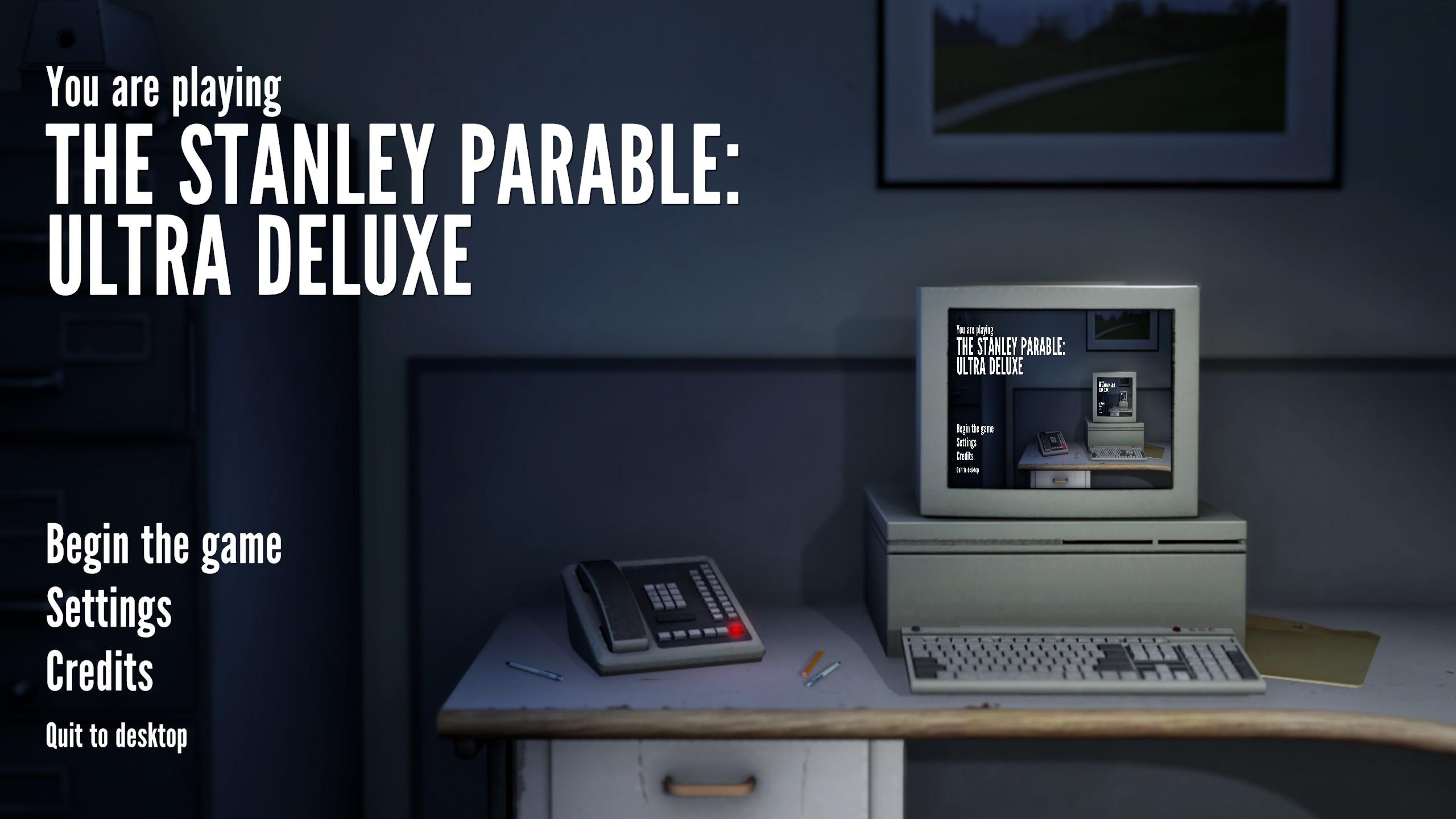“The Stanley Parable” is a thought-provoking interactive narrative experience designed by Davey Wreden and William Pugh, and released in 2013. The game’s target audience is older teenagers and adults, who may understand the dark and snarky humor better than a younger audience would. Available on multiple platforms including PC, consoles, and mobile devices, the game follows the world of Stanley, an office worker whose life takes a surreal turn when he discovers his workplace deserted one morning, and he doesn’t have any mundane tasks given to him. As players guide Stanley through a series of choices, each decision branches into unforeseen consequences, questioning the nature of free will, agency, and the very essence of storytelling itself. Essentially, through the simple act of walking, “The Stanley Parable” invites players to contemplate the power of agency and the consequences of their actions, allowing for each choice to branch into a different segment of the narrative.
Within “The Stanley Parable,” there are many different endings to the game depending on the route and choices that the player makes. The narrative shifts and specific voice lines are triggered by where the player is and whether or not the player follows the directions of the narrator, a quirky voice within Stanley’s head. Although the game predominantly relies on narrative engagement by unraveling the story of Stanley’s work life, discovery also significantly contributes to the experience. First-time players enter uncharted territory, unsure of what to expect, and are encouraged to explore the game’s branching pathways. Despite the simplicity of its mechanics, particularly the act of walking, the game lacks traditional challenges. However, the real enjoyment arises from the consequences of player actions and the agency granted, which ultimately drive the narrative and contribute to the game’s entertainment value.
For me personally, I had a lot of fun playing the game for the first time, and was able to reach two endings: the insane ending and the freedom ending. I also dabbled around, jumping off of a set of stairs and stayed in a closet, which triggered lots of funny lines from the narrator. You can reach the freedom ending by following all of the narrator’s instructions to the tea. I think I later read online that this is considered the “winning” ending. By walking and following all of the action’s the narrator tells you to do, the story that is told to you, the player, is about how Stanley and the other worker’s are simply mindless office workers, being controlled by some higher authority. By being able to turn off this mind control facility, Stanley is set “free” from the restraints of working as another employee 427. In the picture below, the freedom ending puts Stanley within nature, free of all technology and work.

[liberty in the freedom ending]
However, the insane ending diverges from this conventional narrative arc, offering a thought-provoking twist. In this ending, Stanley veers off course, defying the narrator’s instructions and embarking on a chaotic journey of rebellion and self-discovery. I got to this ending by walking down to the staircase, rather than going into my boss’ office. This ending tells the story of how Stanley becomes self-aware of the voices in his head, switching to the perspective of a woman named Mariella, who finds an ‘insane’ Stanley laying on the floor of the sidewalk. In the screenshot below, Stanley thinks “why is there a voice in my head dictating everything that I’m doing and thinking?” As you can see, when I defied the narrator, I am prompted with this unique story of Stanley going insane and being found on the floor by a new character. I believe this story is suppose to commentate on the pressures and constraints of the workplace. By defying the narrator and straying from the predetermined path, Stanley symbolizes an individual breaking free from the monotony and conformity of corporate culture. As the narrator talks about how Mariella got ready and walked to her place of work, it juxtaposes Stanley and Mariella– Stanley who frees himself from the monotony of work and Mariella who is going back in for another day of being a “normal” worker. I think the freedom and insane ending both convey a similar idea, though in two completely different ways.

[screenshot of the insane ending]

[screenshot of Mariella finding Stanley]
Overall, “The Stanley Parable” effectively utilizes the mechanic of walking as a vehicle for storytelling, allowing for the exploration of various narrative branches based on player actions. This emphasis on player agency fosters a sense of empowerment and discovery, as each decision made shapes the trajectory of the story in unique ways. Furthermore, the game’s diverse narratives and humorous elements provide ample incentive for replayability, encouraging players to revisit the experience and uncover new possibilities through alternative choices. This iterative process of exploration not only deepens engagement but also enriches the overall gaming experience, offering players a multitude of pathways to explore and narratives to uncover.



